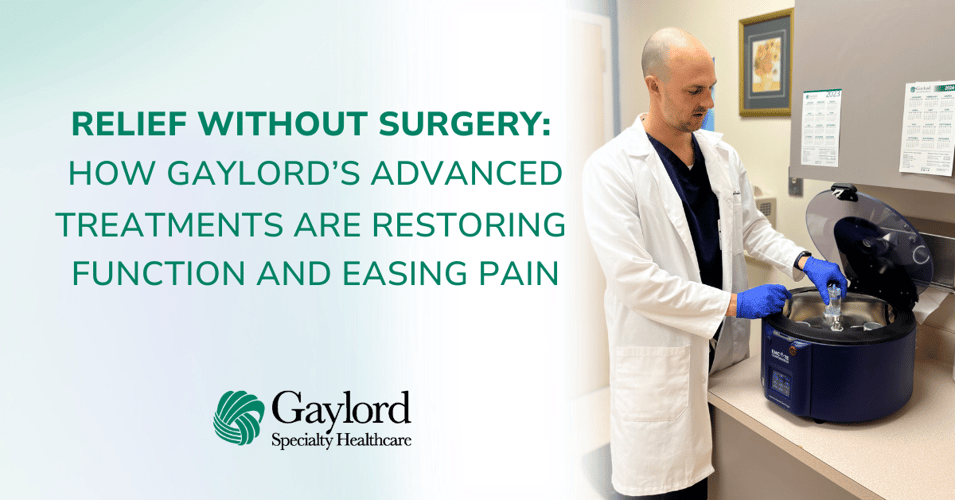When it comes to treating persistent musculoskeletal pain, patients often ask what the difference is between two common treatments: cortisone (or steroid) injections and platelet-rich plasma therapy (or PRP).
While both are very effective tools in a physiatrist’s toolbox, says Dr. Patrick Siegele, a Physical Medicine and Rehabilitation Physician at Gaylord Specialty Healthcare, they work in very different ways and have different uses.
Dr. Siegele explained that cortisone injections are powerful anti-inflammatory treatments. Because they can quickly reduce swelling and pain, these steroids, delivered right to the affected area with ultrasound guidance, can make it more comfortable for someone to participate in physical therapy or other restorative activities.
“For many patients,” he said, “this bridge can be transformative. A single dose of steroids may offer enough relief to help them reach critical recovery milestones.”
He notes that steroids do not treat the root cause of pain, and that frequent use can sometimes interfere with the body’s natural healing process.
Platelet-Rich Plasma, or PRP, takes a regenerative approach, he explains.
By injecting a high concentration of platelets – taken from your own blood – directly into the injured area, PRP stimulates your body’s natural healing mechanisms.
“While cortisone temporarily quiets inflammation, PRP actually creates inflammation to kick-start tissue repair and address the underlying issue,” he says.
Dr. Siegele notes that another key difference between the two treatments is the duration of relief. Cortisone often provides fast results, but its effects are short-lived - only weeks or months. PRP promotes tissue healing, which means results may take weeks to develop but can last for months or even years.
Conditions treated also vary. “Cortisone is typically used for bursitis, arthritis, and other inflammatory conditions whereas PRP can be a good tool for tendon and soft tissue injuries and arthritis,” he says.
Both treatments can play an important role in recovery, depending on the patient’s needs.
To learn more, visit Gaylord.org/physiatry.
This content is for educational purposes only and is meant to provide general information. It is not a substitute for professional medical advice, diagnosis, or treatment. Always consult your healthcare provider with any questions or concerns about your health. In case of a medical emergency, contact your doctor or call 911 right away.


